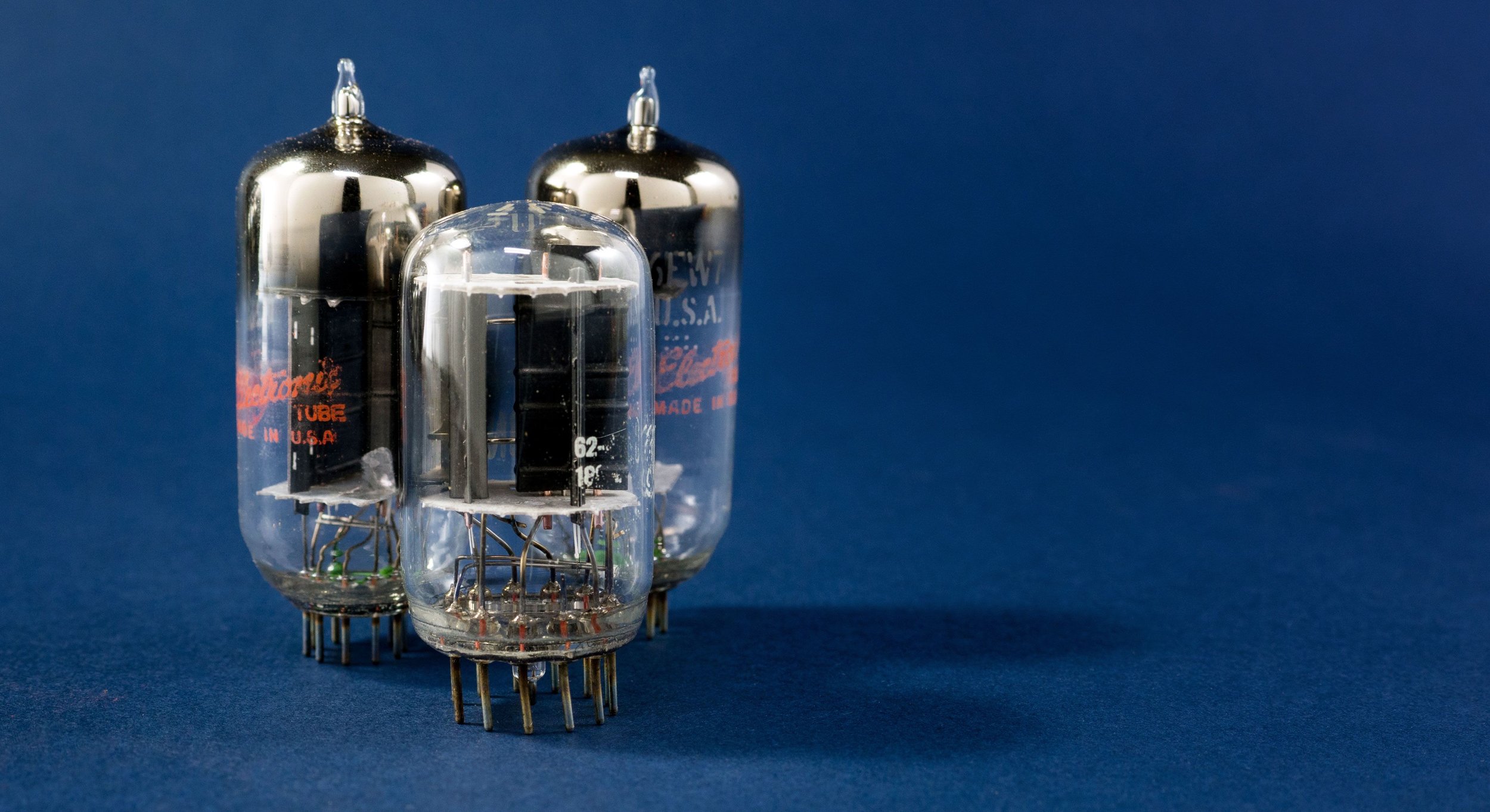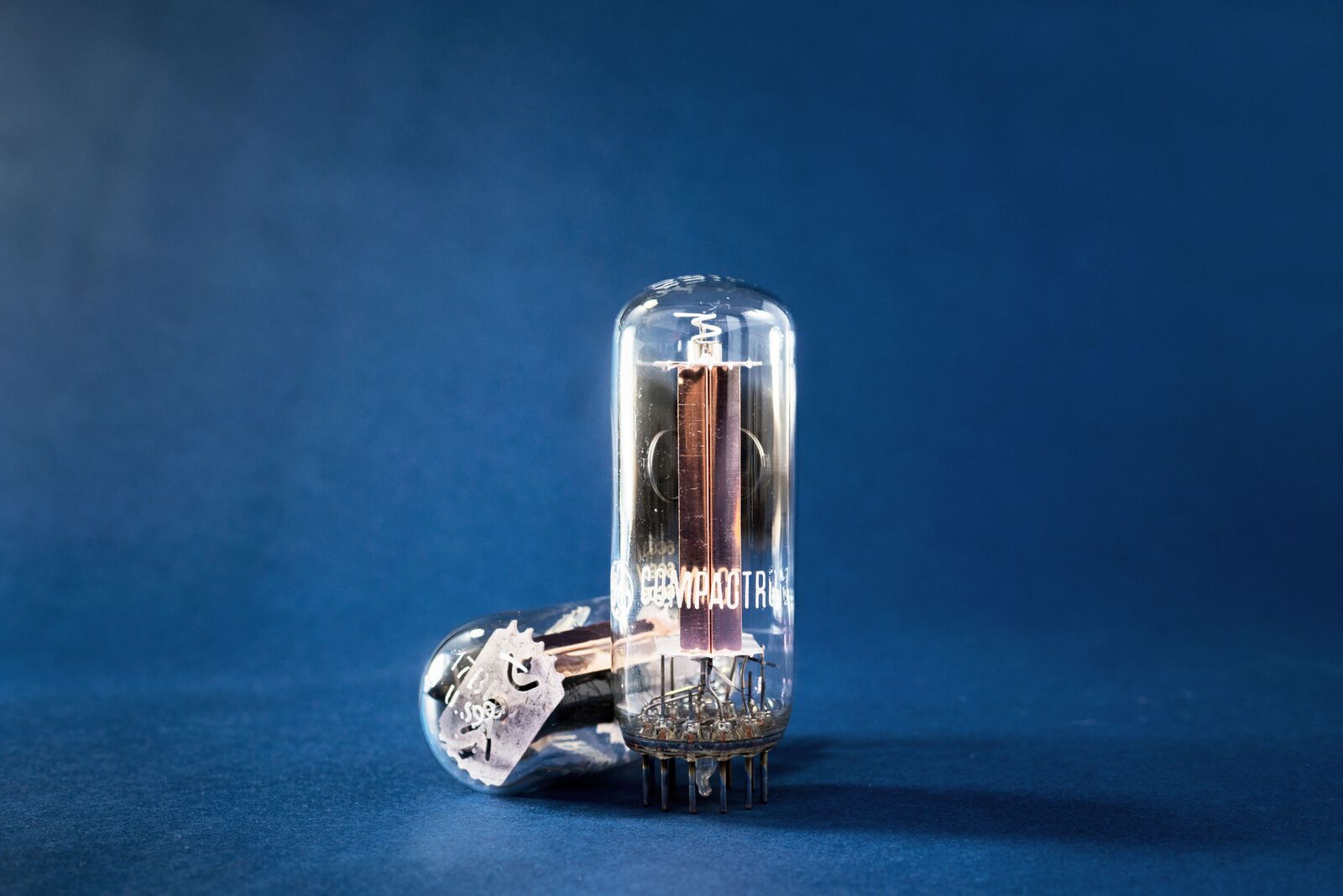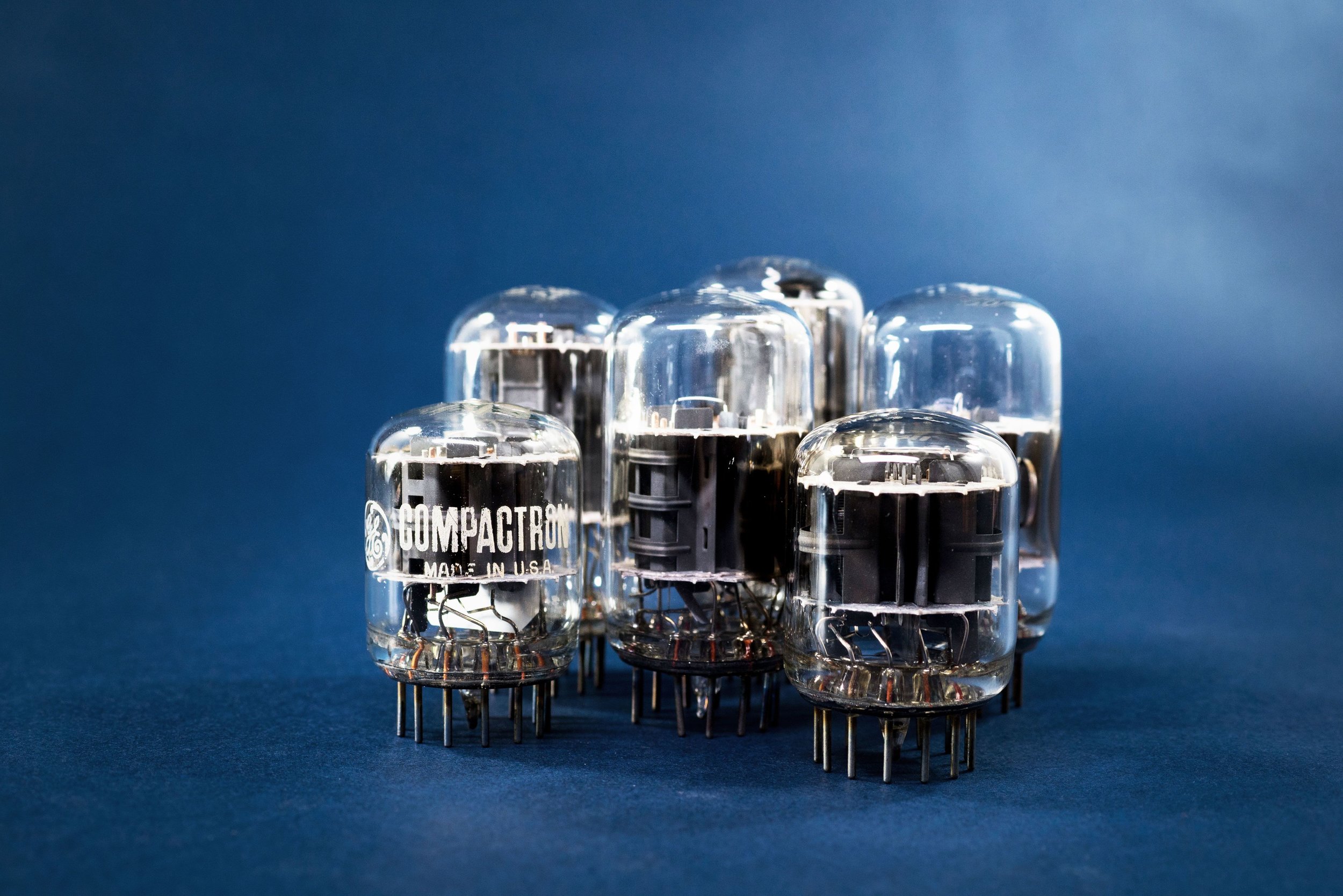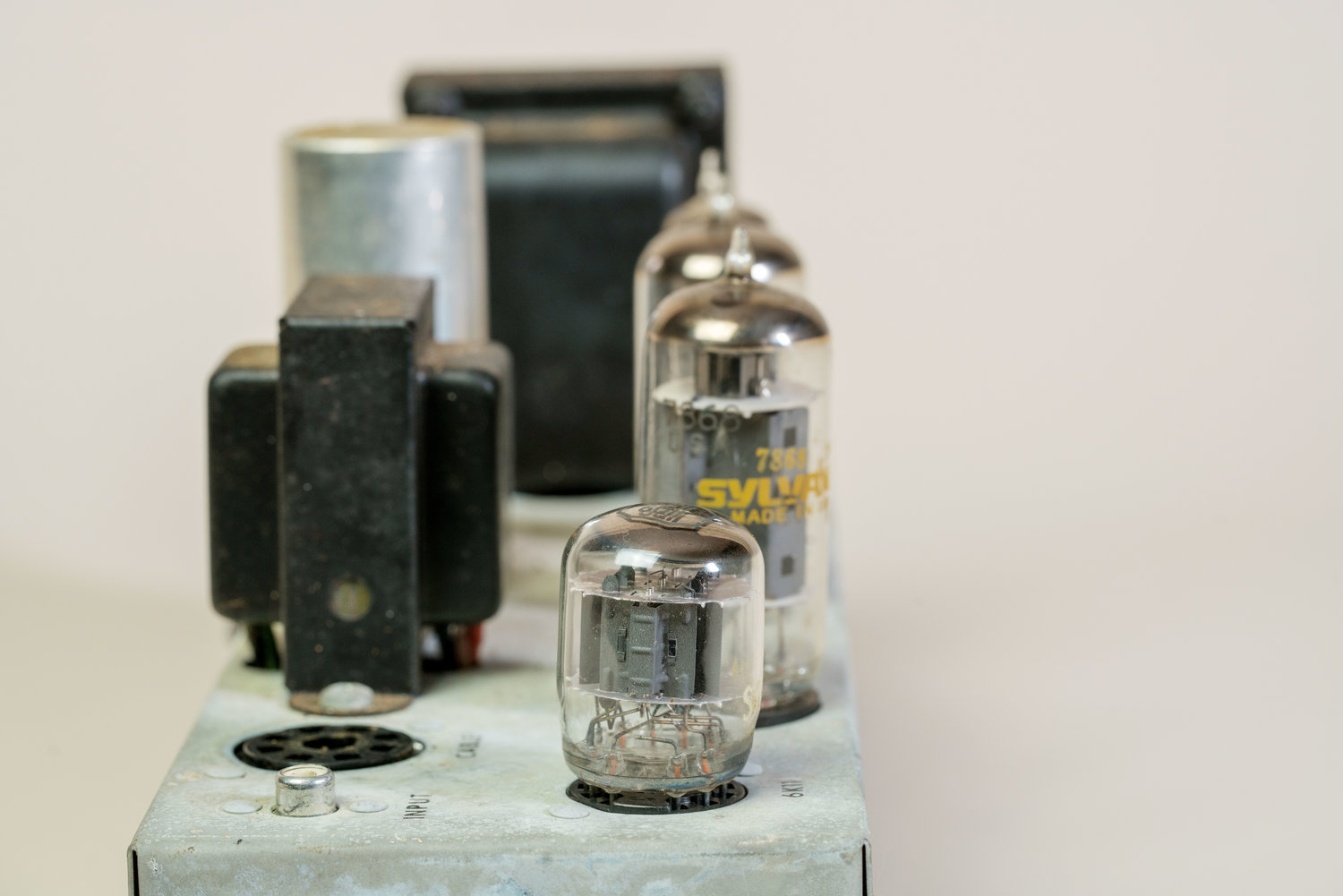Vintage Component Spotlight: Compactron Tubes
There was a time when vacuum tubes were a huge industry. Just about every type of consumer electronics required tubes, and manufacturers competed for a slice of the pie by offering greater resiliency, lower noise, longer lifespans, etc. And then cheap silicon transistors were invented.
Transistors have a lot of advantages over tubes. They don’t offer tube warmth, but even we can admit that not everything requires smooth, 2nd-harmonic-enhancing amplification. (Do hearing aids need tube warmth? Does a laptop?) Instead, transistors are small, cheap, and low-voltage. Every tube requires two power supplies, distance from the other tubes to promote airflow, and huge high-voltage components mounted nearby. In contrast, transistors take up very little space and require a fraction of a tube’s supply voltage. Dozens of transistors could operate in the space that one 12AX7 requires.
So once reasonably reliable transistors were invented, electronics manufacturers of all kinds hopped on the bandwagon right away. Transistors made it possible to produce convenient, miniature devices that consumers loved. Miniature tube devices had been attempted before: for instance, little radios that might electrocute you if you picked them up with wet hands. But transistor devices could be made small without eliminating necessary safety features. Manufacturers were so proud of their transistor circuits that, for a while, everything from alarm clocks to guitar amps was emblazoned with the words “SOLID STATE.”
There was no downside to transistors! Unless of course you manufactured tubes.
In the years before transistors, tube manufacturers had poured a lot of resources into making great tubes. Tubes had been profitable for a long time, and there was no reason why their market dominance shouldn’t continue. Consumers loved tubes! They grew up with tubes! Surely something could be done to stop their transistor-induced decline.
So GE set out to invent a tube that could compete with transistors. It had to be small. It had to be efficient. It had to save space, run cool, and cost less.
And they came up with the Compactron.
The Compactron is a 12-pin tube that combines up to three different combinations of triode and/or pentode in one glass envelope. Consider the 12AX7. This classic 9-pin preamp tube is composed of two triodes in one envelope. One Compactron variation, the 6K11, attempted to improve upon that by fitting three triodes in one envelope. Another, the 16BQ11, is a dual pentode. These are all great, but definitely not enough to slow the dominance of transistors. And it wasn’t exactly new technology: in the 1920s, German tube manufacturer Lowe created a three-triode tube that also included, in the same envelope, the necessary passive components to make it functional as a standalone radio receiver.
Compactrons could certainly reduce the number of tubes in a circuit, which saved space, helped the circuit run cooler, and reduced the amount of necessary wiring. It also meant fewer tubes to replace (although, of course, more triodes means more opportunities for any single tube to fail). And, because the evacuation tip was placed on the bottom of the tube, Compactrons did look somewhat sleeker and more futuristic than conventional tubes.
However, Compactrons were never a serious competitor to transistors. They reduced the necessary mounting space by a fraction, but still operated with the same high voltages, the same heater requirements, and the same kind of passive circuits as other tubes. Some electronics companies gave them a try anyway, but, unless their designs specifically required the qualities of vacuum tubes, most quickly turned to transistor designs.
For instance, Wurlitzer released two versions of their electronic piano in the 1960s: a solid state version (the Wurlitzer 140), and a tube version that made use of Compactron tubes (the Wurlitzer 145). Possibly, Wurlitzer was hedging their bets, just in case their customer base distrusted the newer technology and preferred a tried-and-true tube amp instead. If that was the case, they didn’t need to worry: the solid state version was successful, and Wurlitzer discontinued the tube version one year after its release.
The 6K11 Compactron tube in an original Wurlitzer 145 amplifier. The two 7868s are behind it (and the 6CA4 rectifier tube is behind them).
Compactrons were best used in applications that transistors were unsuitable for: televisions and audio amplifiers. For many years, transistors lacked the necessary frequency response and power handling the televisions required. Many televisions relied on tubes well into the 1980s, and Compactrons proved to be useful space-saving devices.
Hi-fi and guitar amp manufacturers likewise appreciated Compactron tubes, because it allowed them to squeeze a few more features into an all-tube design without the expense of enlarging the chassis. By using a 6K11 Compactron, the Wurlitzer 145 was able to add tube tremolo using the same amount of preamp tubes (just one) as the previous no-tremolo model, the Wurlitzer 120. The Amp V4 also uses a 6K11, as did several hi-fi amplifiers into the 1970s. However, as GE abandoned the idea that Compactrons could seriously compete with transistors, and the supply started to dwindle, amp manufacturers switched back to more readily available nine-pin tube types. The final new-production Compactrons were sold in the early 1990s.
Compactrons were an interesting idea, but they ultimately proved to be too little, too late to truly compete with transistors. Maybe if Lowe’s three-triode tube really took off in the 1920s, tube manufacturers might have had an incentive to explore more complex tube concepts earlier. Then, by the time transistors came about, true integrated-circuit-style vacuum tubes might have already existed, and developments in tube and solid state technology could have proceeded in parallel. (Maybe.)



Further Reading
Browse all of our articles on restoring vintage gear. Or, click on an image below.









